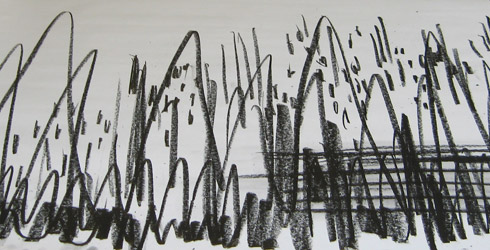Deal or No Deal? Expectations and Experiences of First-year Students in Art & Design
Mantz Yorke and David Vaughan
The Higher Education in Art and Design [HEAD] Trust and the Art Design Media Subject Centre of the Higher Education Academy (ADM-HEA) funded a web-based survey of the ‘match’ between students’ expectations of higher education and their actual experiences of their first year. The changes to the funding of both institutions and students make the forthcoming Report particularly timely. The surve...

The Higher Education in Art and Design [HEAD] Trust and the Art Design Media Subject Centre of the Higher Education Academy (ADM-HEA) funded a web-based survey of the ‘match’ between students’ expectations of higher education and their actual experiences of their first year. The changes to the funding of both institutions and students make the forthcoming Report particularly timely.
The survey addressed the following aspects of first-year students’ experience:
- influences on their choice of programme and institution
- expectations that they had had regarding study in higher education
- their opinions regarding their first-year experience.
Twenty institutions took part in the survey, which attracted usable responses from 778 first-year students.
The three most potent influences on the choice of institution were its location, the visit, and the portfolio interview: the institutional prospectus was widely influential, but rarely strongly. Potential future career and lifestyle had a strong bearing on the choice of course. This study, like others, has shown that students vary considerably in terms of both background and what they want from their higher education experience, and what gives them satisfaction or dissatisfaction.
A majority of those visiting the institution had been satisfied with the accuracy of the information they had been given, and that it had been informative about the nature of first-year study.
Students’ perceptions of their experience varied quite widely in respect of assessment methods; learning environment; teaching quality and course organisation, and the Report illustrates this variation with students’ comments. An analysis of the data by institution suggested that some institutions were being more successful than others in establishing a close match between student expectation and experience.
The survey showed that students received feedback in various combinations of three main ways (discussion with tutors; written comments; and ‘crits’), supplemented for about half of the respondents by informal feedback from peers.
Most respondents had regular access to practical workspaces, with half indicating the need to book items of equipment (though a minority had been surprised to find this was a necessity). The support provided by technicians was highly regarded.
The survey found, in a substantial minority of responses, weaknesses in course organisation and management similar to those exposed by the National Student Survey. However, some of these weaknesses seem relatively easy to rectify, given the will.
The Report concludes by setting out a template of questions that provide a starting-point for reflective analysis by institutions, faculties and programmes that are keen to test whether their provision is likely to meet with success in the rapidly changing environment of higher education in the UK.
The HEAD Trust 'Student Expectations Survey Report' will be launched in May 2012 - further details will follow and the final report will be accessible from the Networks website.
Listing and header image: section of drawing made at Is Art Good for You? workshop, 2009, photo: Jenny Embleton


